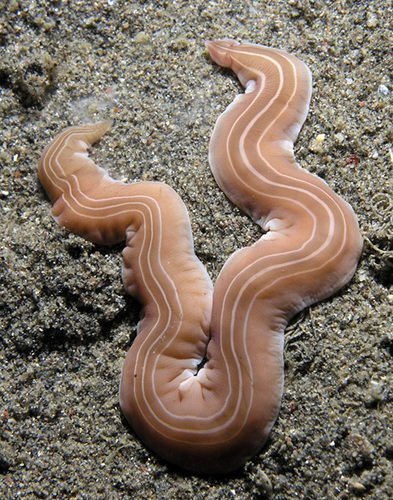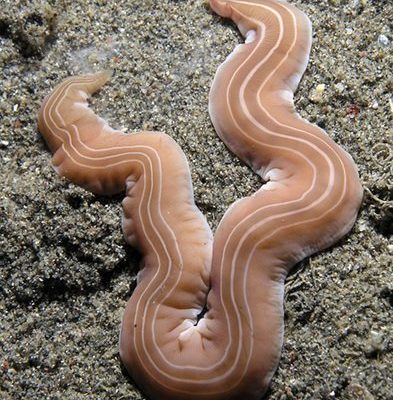
So, how are these intriguing organisms classified? Well, it’s not as straightforward as you might think! Classification is like a giant puzzle where scientists piece together different attributes, behaviors, and genetic information to understand how living beings relate to one another. Here, we’ll dive deep into the classification of ribbon worms and explore what makes them so special within the vast phylum Nemertea. Let’s roll up our sleeves and wade into the waters of zoological classification!
What is Nemertea?
Nemertea, commonly known as ribbon worms, is a phylum that encompasses a diverse range of species, mostly found in marine environments, but they can also be found in freshwater and on land. This phylum is characterized by the presence of a long, soft body that’s often flattened and elongated, resembling a ribbon—hence the name.
These worms can vary in size, with some species measuring just a few millimeters while others can grow over 30 meters long! It’s kind of wild to think about, isn’t it? Their bodies are composed of three main layers: an outer epidermis, a muscular layer, and an inner gut lining, making them quite complex for such simple creatures. You might be wondering what sets them apart from other worm-like organisms. The answer lies in their unique features, like a specialized proboscis that can be ejected to capture prey.
The Major Classes of Ribbon Worms
Ribbon worms are categorized into several classes based on their morphological and anatomical features. The three main classes of Nemertea are **Anopla**, **Enopla**, and **Heteronemertea**. Each class has distinct characteristics, which helps scientists sort them into the right categories.
– **Anopla**: These ribbon worms typically lack a hard shell on their proboscis and are mostly found in marine environments. They have a simple structure and can often be identified by their smooth outer surface.
– **Enopla**: In contrast, Enopla worms have a more complex body structure. They possess a hardened proboscis and often exhibit vibrant colors and patterns that can help with camouflage in their habitats.
– **Heteronemertea**: This class includes species that don’t quite fit into the other two categories. They can exhibit various features from both Anopla and Enopla, making them a bit of a wild card in classification.
Understanding these classes is crucial when studying ribbon worms because it gives insight into their evolutionary history and ecological roles. You see, classification is not just about sorting; it’s about *understanding*.
Characteristics that Influence Classification
When scientists classify ribbon worms, they look at several key characteristics. These include the structure of their body, the type of proboscis, and reproductive methods.
1. **Body Structure**: The shape and length of the body help identify the class. For example, Anopla worms tend to have a more simple, flattened body, while Enopla worms might show a more complex morphology.
2. **Proboscis Type**: The proboscis is a standout feature. It plays a key role, not only in feeding but also in classification. The way it operates and its structure can tell you a lot about the worm’s evolutionary path.
3. **Reproductive Strategies**: Ribbon worms have different methods of reproduction, such as asexual budding or sexual reproduction with male and female individuals. The reproductive strategy can influence their classification, helping scientists decide where they fit in the family tree.
These characteristics make classification more than a few labels slapped on some creatures; it helps encapsulate their entire life story and evolutionary journey.
The Role of Genetics in Classification
With advancements in technology, genetics has become a game-changer in the classification of ribbon worms. While physical features have long been used to categorize species, genetic analysis offers a more precise way to figure out relationships among species.
Through DNA sequencing, scientists can uncover evolutionary connections that may not be apparent through morphology alone. For instance, genetic markers can show how different species diverged from common ancestors, ultimately shaping their classification in the tree of life.
This method is particularly useful for identifying new or cryptic species—those that look similar but are genetically distinct. Think of it like uncovering hidden layers of a complex recipe. With each genetic discovery, the understanding of ribbon worms’ classification becomes richer and more nuanced.
Why Classification Matters
You might be wondering why all this classification stuff is important. Well, understanding how ribbon worms and other creatures fit in the grand scheme of life helps scientists protect ecosystems, study biodiversity, and even develop new medicines.
When we know what types of ribbon worms exist and where they fit in the food chain, we can better appreciate their roles in the environment. For example, ribbon worms can be both predators and prey, impacting other marine species.
Additionally, investigating these organisms can lead to discoveries in science, such as advancements in biotechnology or medicine. Their unique biological features spark curiosity and push research boundaries, proving that even creatures that seem simple can teach us complex concepts.
Classifying ribbon worms in the phylum Nemertea is like piecing together a fascinating puzzle. Each discovery adds a new piece to our understanding of life on Earth. From the unique characteristics of each class to the genetic revelations that help clarify relationships, the study of ribbon worms is a gateway to understanding the intricate web of biodiversity.
As scientists continue to explore and learn more about these ribbon-like creatures, they unveil the wonders of evolution, anatomy, and ecology. Honestly, isn’t that what makes biology exciting? It’s a journey that reminds us there’s always more to discover, whether in the depths of the ocean or in the delicate folds of a ribbon worm. So, the next time you hear about these fascinating creatures, you can appreciate their complexity in the greater tapestry of life!

